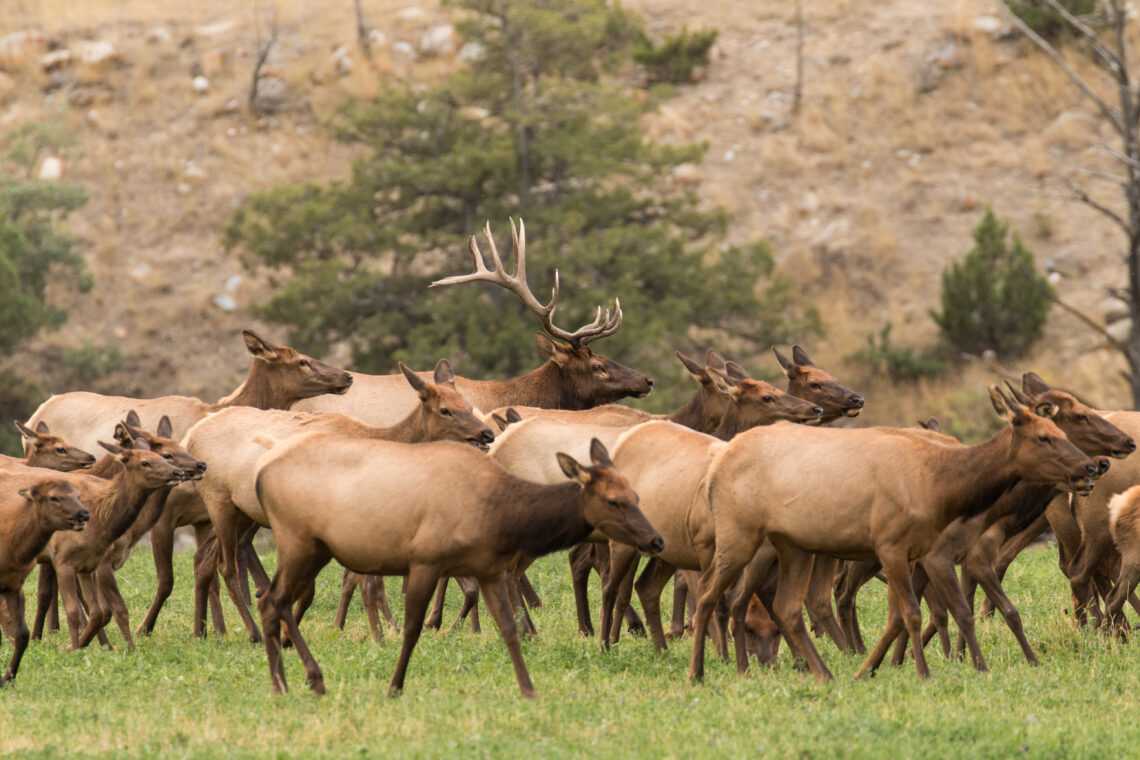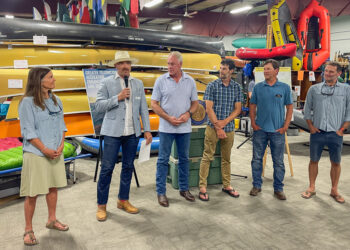Stopping the spread of CWD
By Benjamin Alva Polley EBS COLUMNIST
Elk feedgrounds resemble crowded bars where animals are packed closely together. In these tight spaces, they engage in behaviors similar to humans, such as sniffing each other and getting in each other’s faces to communicate over the noise. This close contact allows for the transfer of germs, akin to a scenario where bacteria and mucus are accidentally shared among individual people. Diseases like the common cold, pneumonia in sheep, and Chronic Wasting Disease, a fatal neurological disorder, spread in much the same way, as they thrive in this environment where viruses can easily jump from one host to another through close interaction.
Chronic Wasting Disease primarily spreads through direct contact between infected animals, such as deer and elk, as well as through environmental contamination. Infected animals can shed prions, which are the infectious agents, in their saliva, urine, feces and blood. These prions can remain infectious in the environment for extended periods, posing a risk to other animals that come into contact with contaminated soil, water or food.
Infected animals can transmit the disease to healthy ones through both direct and indirect contact. Direct contact includes mutual grooming or sharing resources. In contrast, indirect contact occurs when CWD prions contaminate the environment via the excretion of infected bodily fluids, the decay of infected carcasses, and the shedding of prions from infected tissues, including antler velvet. Healthy animals can become infected by coming into contact with contaminated soil, water, feed, or even plants that have been exposed to prions. Additionally, deer scrapes—areas where bucks clear ground and mark it with urine and other secretions—can also serve as a source of CWD transmission, as other deer may visit these areas and potentially come into contact with the infection.
Human activities, such as feeding deer, elk or moose, baiting, and providing mineral licks, can lead to increased congregation of these animals, thereby raising the likelihood of CWD transmission. This situation is currently observed in Wyoming, where the Game and Fish Department operates 21 elk feedgrounds. The state began feeding elk in 1909 to help them survive the colder months and to prevent them from damaging private property. However, what was initially intended to aid elk populations is now being recognized as harmful. Wyoming is the only state in the West that encourages this practice; other states discourage the commingling of elk and livestock due to the risk of disease transmission.
In early February 2025, the second and third cases of CWD were discovered in Wyoming. This disease could spread rapidly throughout the state’s elk herd, potentially collapsing their herds and extending into the Greater Yellowstone Ecosystem and north into Montana. Wyoming Game and Fish has held internal meetings to see what can be done differently.
When an elk contracts CWD, abnormal proteins called prions accumulate in the central nervous system, particularly in the brain and spinal cord. These prions damage brain tissue, leading to neurological dysfunction. In later stages, symptoms may include a gradual loss of body condition, including fat and muscle mass, as the disease progresses. Infected elk may become listless, lose their fear of humans, or exhibit abnormal behavior such as excessive salivation and increased thirst. As brain damage worsens, symptoms may also include poor coordination, stumbling, tremors and a wide stance. Other common signs in the later stages include drooping ears, difficulty swallowing and excessive urination.
CWD is always fatal to infected elk. While they may survive for a year or more after contracting the infection, death associated with the disease is ultimately inevitable. The clinical stage of CWD can last anywhere from a few weeks to several months, with aspiration pneumonia often being a common complication in the terminal stages.
It is essential to note that elk can be infected with CWD for an extended period—ranging from months to years—before exhibiting visible symptoms. Diagnosis cannot rely solely on symptoms, as other diseases or conditions can cause similar signs, and definitive diagnosis requires post-mortem testing of brain and lymph node tissue.
There is currently no treatment or vaccine for CWD. The CDC recommends avoiding the consumption of meat from CWD-positive animals due to the potential, though not confirmed, risk of transmission to humans. Hunters should be vigilant for signs of CWD and report any suspected cases to wildlife authorities.
Benjamin Alva Polley is a place-based storyteller. His words have been published in Rolling Stone, Esquire, Field & Stream, The Guardian, Men’s Journal, Outside, Popular Science, Sierra, and other publications, and can be seen on his website.















